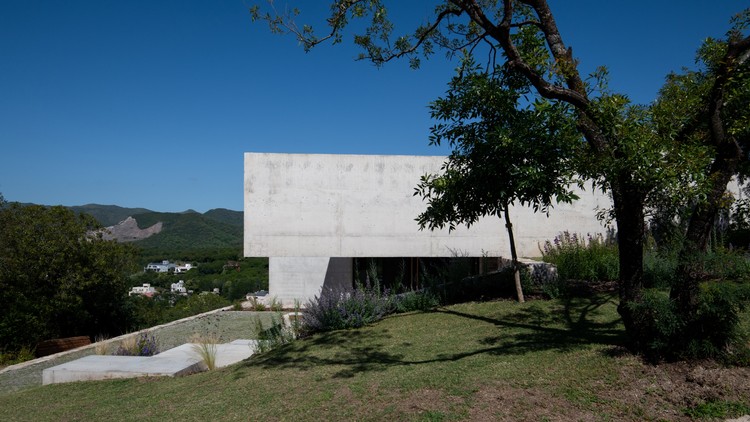audis 2014 urban future award paves the way to smooth city driving
2014-11-19 17:54
Audi's Urban Future Initiative sees invited teams of architects, designers, planners and other professionals suggest new ways of dealing with the myriad problems of 'urban mobility'. This year's winner was the team representing Mexico City
和许多大型汽车公司一样,奥迪也在花费大量的时间来探索如何使其产品与城市环境更好地融合在一起。汽车与城市之间的关系存在争议,但确保这两者在未来多年内和谐共处,显然符合汽车制造商的最大利益。
他们努力的核心是奥迪的“城市未来计划”(UrbanFutureInitiative)。奥迪是一家品牌浓厚的企业,受邀的建筑师、设计师、规划师和其他专业人士提出了解决“城市流动性”众多问题的新方法。奥迪推出自己的技术驱动的解决方案,与时尚的渲染和光滑的CGI,创造了一个良性的创新循环。
就是这个主意。它的工作是因为技术是奥迪的品牌标识之一。自从上世纪80年代初,一家(英国)广告公司的广告公司制造了“Vorspung durch Technik”这个词以来,该公司的形象基本上与一位技术驱动的创新者的形象不相上下。在这段时间里,它还稳步走上高端市场,现在已成为世界上最受欢迎的高档品牌之一。从现在起,真正的创新潜力超越了汽车制造领域,首席执行官鲁珀特·斯塔德勒(RupertStadler)在2010年被任命为一个市场友好型智库后不久就成立了“城市未来倡议”(UrbanFutureInitiative)。
2014年,四支队伍迎接了四个截然不同的城市的挑战:柏林、首尔、波士顿和墨西哥城。他们的确切目标可以粗略地描述为“探索汽车如何在未来的大城市中继续发挥作用”。尽管许多庄严的评论员从根本上不同意这一前提,但这并不是汽车制造商想要听到的。相反,我们得到了四份争论激烈的研究文件,这些文件对数据进行了筛选,以计算出一次特定旅程的最佳选择(波士顿和墨西哥城),将汽车改造成一个几乎可以表达和促进社会愿望、地位和利益的建筑对象(首尔),以及一项深远的计划,将废弃的城市基础设施改造成一个准自主的个人交通系统(柏林)。
每个团队的想法都建立在一个具体的现实中,尽管系绳并没有阻止它们飞向幻想的领域。获奖者和€100,000获奖者是墨西哥队,由建筑师何塞·卡斯蒂略、分析师卡洛斯·格申森和智库领袖加布里埃拉·戈麦斯-蒙特组成。他们的提案之所以成功,很大程度上是因为墨西哥城-一个拥有2000万人口的大都市-几乎没有触及拥堵问题的表面。调查和原始数据在地面上非常稀少,因此奥迪赞助的这项计划有很大的潜力,可以帮助规划者解决如何降低交通的巨大社会、经济和环境成本。
该倡议以前强调了J梅耶尔H和比尔克因格斯的工作,这意味着时尚的视觉效果通常胜于务实的数据处理。墨西哥城的胜利与这一趋势背道而驰,这意味着该公司希望解决其产品与周围世界互动的方式,这意味着该公司的新成熟。当然,自动驾驶是汽车业的热门话题.奥迪在颁奖典礼后花时间展示了它的最新创新。交通灯辅助可能听起来平淡无奇,但要让它正常工作,这是一个非常复杂的数据迷宫,必须在每一步谈判。
TLA把你的车连接到城市的交通系统。然后,它向仪表板显示器提供有关即将到来的十字路口的信息,给你最佳的驾驶速度,以便在它改变之前到达交通灯,否则当你到达时,它就会改变。如果你被抓到红色,它会切断引擎,数到绿灯亮的时候,在该走之前5秒钟就会亮起来。在实践中,它是无缝工作的,尽管柏林2000盏灯中只有不到一半的灯是连接在里面的。
城市汽车的未来很可能是像这样的无数小系统的零碎引进,每个系统都需要大量实时数据的同步。奥迪并不是在掩饰挑战。但它深知,作为一个创新者意味着它将制定其他人必须遵守的标准。
Mexico City: Mexico's team, consisting of architect Jose Castillo, analyst Carlos Gershenson and think tank-leader Gabriella Gomez-Mont, won €100,000 for its proposal, which included a data-heavy app design
Mexico City: Surveys and raw data are desperately thin on the ground in Mexico, so the Audi-sponsored initiative has strong potential for helping planners figure out how to cut the huge social, economic and environmental cost of traffic
Mexico City: The proposal triumphed largely because Mexico City – a sprawling metropolis of 20 million – has barely scratched the surface of its congestion issues
Berlin: The team representing Berlin proposed a far-reaching plan to transform abandoned city infrastructure into a quasi-autonomous personal transportation system
Berlin: The German team aimed to show how a newly developed district abandoned by TXL Airport can be connected to the German capital city. Pictured here is a 'route station'
Berlin: A 'multimodal' transportation concept with flywheels
Berlin: A digital rendering of Berlin's 'flyaway bypass'
Boston: Boston's 'piloted parking' scheme would use 50 per cent less space than current parking schemes
Boston: The dashboard quantifies future ecological impacts from emissions
Boston: A 4M hub and cafe would provide real-time transport information
Seoul: Team Seoul transforms the car into a 'traveling interface to the city', a machine for virtual experience. Travelling in traffic along the Yangjae Stream will resemble a visit to a theme park, with music and performances
Seoul: The team transformed the car into an almost architectural object that expresses and promotes social desire, status and interests
Seoul: Different entertainment modes would transform the car from a stressful device to a stress-free environment
keywords:Audi, Urban Future Initiative, Boston, Mexico City, berlin, Seoul
关键词:奥迪,城市未来计划,波士顿,墨西哥城,柏林,首尔
和许多大型汽车公司一样,奥迪也在花费大量的时间来探索如何使其产品与城市环境更好地融合在一起。汽车和城市之间有着争议的关系,但这显然符合汽车制造商的最大利益.
 举报
举报
别默默的看了,快登录帮我评论一下吧!:)
注册
登录
更多评论
相关文章
-

描边风设计中,最容易犯的8种问题分析
2018年走过了四分之一,LOGO设计趋势也清晰了LOGO设计
-

描边风设计中,最容易犯的8种问题分析
2018年走过了四分之一,LOGO设计趋势也清晰了LOGO设计
-

描边风设计中,最容易犯的8种问题分析
2018年走过了四分之一,LOGO设计趋势也清晰了LOGO设计



























































